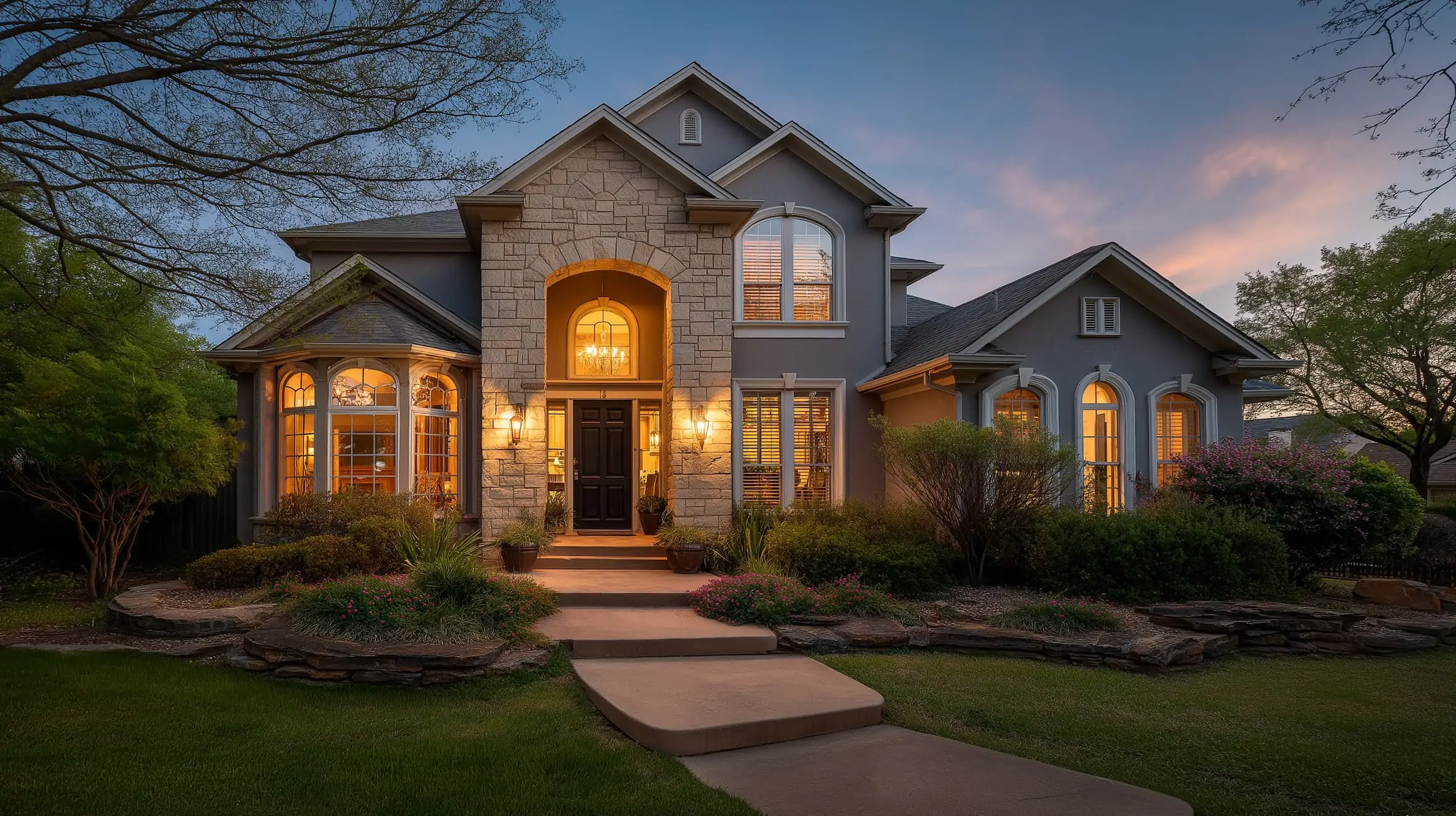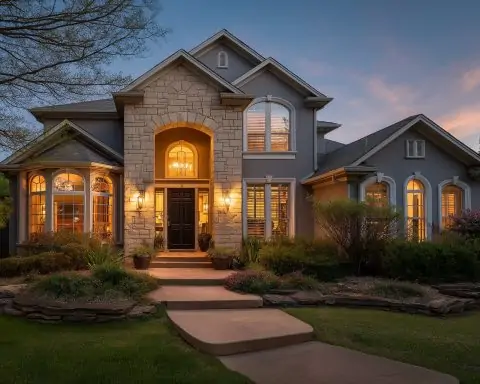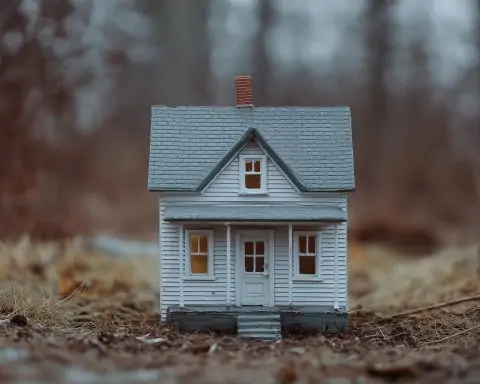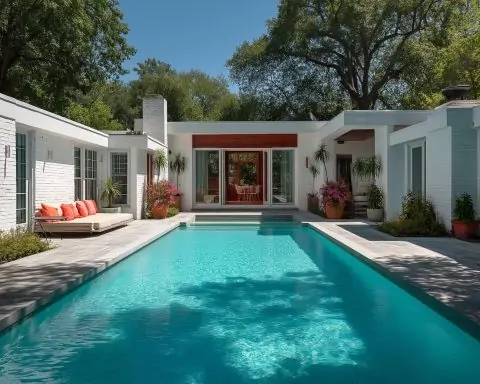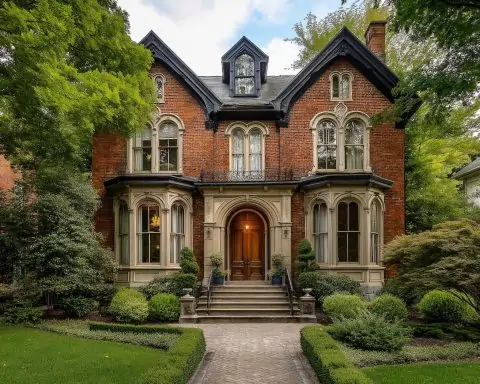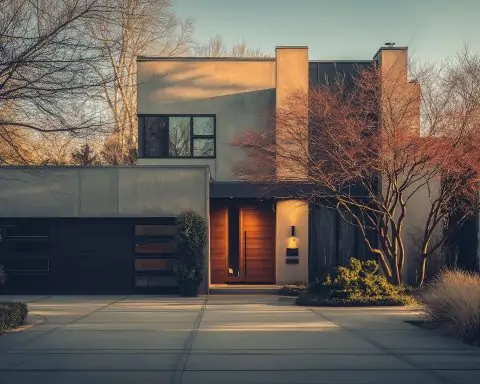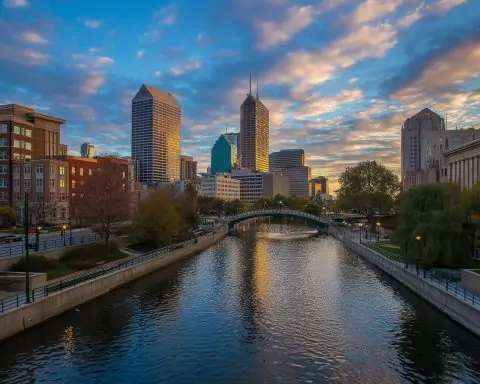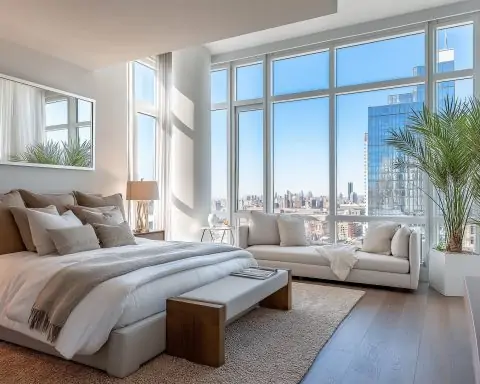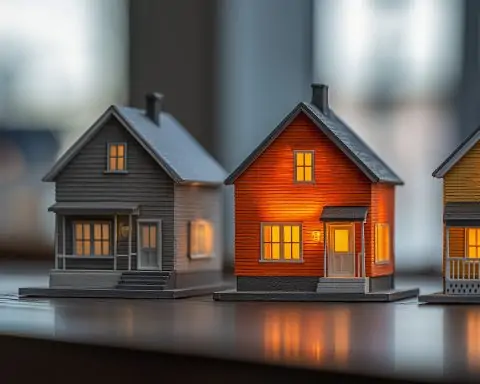Key Facts and Trends (2025)
- Housing Prices Ease: The median home price in the Austin suburbs is around $430,000 as of early 2025, marking a 2.3% dip from a year earlier lrgrealty.com. After the pandemic-era surge (2020–2022 saw prices jump over 60%), the market has entered a cooler phase. Inventory has swelled to about 17,000 active listings (up ~15% year-on-year) lrgrealty.com, and homes now sit a median of 78 days on market (about 19 days longer than last year) lrgrealty.com – clear signs of a shift toward a buyer’s market.
- Buyer’s Market Emerges: With supply outpacing demand, buyers have gained leverage. The gap between active listings and pending sales hit a 20-year high by mid-2025 (over 12,600 more homes listed than under contract) teamprice.com. Ample choice and longer selling times mean buyers can negotiate prices and contingencies more aggressively. Sellers are responding by cutting prices or offering concessions, especially on resale homes competing with new builds teamprice.com. Overall, prices have leveled off or softened slightly from their 2022 peak, and further mild price corrections are possible if demand remains subdued teamprice.com.
- Rents and Yields: Rental demand remains solid in suburban Austin, but rent growth has flattened in the face of high supply. Average apartment rents hover around $1,760 per month lrgrealty.com, roughly unchanged year-over-year. This stability, combined with slightly lower home prices, has kept gross rental yields for investors in the mid-single-digits (~5% range). In suburbs where home purchase prices are lower than in Austin’s urban core, investors can actually achieve better rental yield percentages ark7.com – a draw for those seeking cash flow. Many would-be buyers priced out by high interest rates have turned to renting, which supports occupancy. Suburban multifamily occupancy rates are holding near 93% on average mmgrea.com, and generous leasing concessions by landlords have prevented any renter exodus despite the new supply.
- Commercial Real Estate Mixed: The office market in Austin’s suburbs faces headwinds in 2025. Overall metro office vacancy has soared to about 24.8% partnersrealestate.com – the highest in over a decade – as companies scaled back space and a wave of new buildings hit the market. Suburban office submarkets saw negative net absorption in early 2025 partnersrealestate.com, pushing vacancies up despite some leasing wins in hotspots like the Domain area. By contrast, the industrial real estate sector is rapidly expanding. Nearly 19 million sq. ft. of industrial space (warehouses, logistics centers, etc.) is under construction across the Austin region opportunityaustin.com, much of it in suburban corridors. This building boom pushed the industrial vacancy rate to about 13–14% by mid-2025 – a decade high – as new big-box distribution centers delivered faster than they could be filled matthews.com. Industrial rents even ticked down slightly (about –1.5% annually) amid the glut of new space matthews.com. Retail and mixed-use development in the suburbs is on an upswing: new shopping centers, restaurants, and hotels are springing up to serve the growing population, often as part of large mixed-use communities.
- Population & Growth Fuels Demand: Austin’s metro population is around 2.6 million in 2025 matthews.com and still growing roughly 2–3% per year (one of the fastest rates in the U.S.). Strong in-migration – about 145,000 people moved into the area just in the last year opportunityaustin.com – and natural growth are projected to push the metro to nearly 3 million residents by 2030 opportunityaustin.com. Key suburban counties like Williamson County (north of Austin, includes Round Rock, Cedar Park, Leander) grew 14.5% just from 2020 to 2023 opportunityaustin.com. This rapid population growth underpins long-term housing demand in the suburbs, both for owned homes and rentals. It also drives need for more commercial services – hence new retail centers, schools, and workplaces being developed across suburban towns.
- Infrastructure Boom: The Austin suburbs are benefitting from major infrastructure investments. Texas’ new 10-year transportation plan is injecting almost $4 billion into Austin-area road upgrades communityimpact.com communityimpact.com. Key highway projects are funded to widen I-35, improve Loop 360, extend SH-130 tollway, and upgrade major corridors like US 183 and Hwy 71 that serve suburban commutes communityimpact.com communityimpact.com. These improvements will relieve congestion and improve access to fast-growing suburbs. On the local level, cities like Round Rock, Leander, and Buda are investing in new water lines, transit hubs, and road extensions to support massive new housing developments communityimpact.com leandertx.gov. Such infrastructure expansions not only improve quality of life but also tend to boost property values over time by making outer areas more accessible and attractive for development.
- Top Schools Drive Housing Choices: School districts play a pivotal role in suburban real estate. Homes in the highest-rated school districts (e.g. Eanes, Round Rock, Leander ISD) command premium prices due to fierce demand from families austin101realty.com. Parents are often willing to pay more or rent longer-term in these areas to secure quality education for their children. As a result, even in a cooler market, neighborhoods zoned to sought-after schools tend to hold value better and sell faster. The stability and appreciation of homes in good school districts have historically outperformed the regional average austin101realty.com. For investors, properties in these districts also see strong rental demand (families vying to get into the school zone), which can mean lower vacancies and reliable long-term tenants. Conversely, if Texas were to implement broad school-choice programs or vouchers in the future, it could slightly blur the advantage of specific school districts – but for now, “location in a great school district” remains one of the safest value-add factors for suburban real estate.
- Investment Climate: Despite short-term cooling, the Austin suburbs remain a compelling investment target. Housing affordability (relative to coastal markets) and high rental demand yield attractive opportunities. Investors in 2025 find a rare scenario: a high-growth Sunbelt city that’s temporarily in a buyer-friendly lull. Average cap rates have edged up, improving returns – for example, Austin office buildings sold in the past year averaged about a 6.0% cap rate partnersrealestate.com, and suburban multifamily cap rates are similarly in the 5–6% range as of 2025. Texas’ regulatory environment is also a plus: in late 2023, voters approved a major property tax cut (Proposition 4) that is reducing school district tax rates and doubling the homestead exemption from $40K to $100K texastribune.org. This is saving the average homeowner ~$1,200 a year and even capped taxable value growth at 20% annually for non-homesteaded properties (like rentals) under $5 million texastribune.org. Lower tax burdens and the state’s no-income-tax policy improve the net yields for property owners. Additionally, several corporate expansions (Tesla’s Gigafactory, Samsung’s $17B chip plant in Taylor, new Apple campus, etc.) are on the horizon, which bolsters confidence in the region’s long-term job and housing demand. Savvy investors are selectively acquiring assets now – from single-family rentals to suburban shopping centers – to ride the next wave of growth.
<br>
Residential Real Estate Trends in Austin’s Suburbs (2025)
Cooling from a Frenzy: After a frenzied few years, suburban Austin’s residential market cooled in 2025. Bidding wars have largely disappeared, and annual price appreciation has stalled out – even turning slightly negative in many communities lrgrealty.com. For context, from 2020 to 2022, many Austin suburbs saw double-digit percentage price gains each year (some neighborhoods up 40%+ in two years). That unsustainable boom, driven by remote-work newcomers and historically low interest rates, pushed the affordability envelope. Now, with 30-year mortgage rates around 6.8%–7% lrgrealty.com, buyer demand has tempered. Families that must move (due to job or life changes) are more price-sensitive, and some first-time buyers have hit a ceiling on what they can afford. As a result, median prices in popular suburbs like Round Rock, Pflugerville, and Buda are flat to slightly down compared to last year. For example, in the broader Austin metro, the Q1 2025 median was ~$429K (down 2.3% YoY) lrgrealty.com, and areas on the fringe such as Caldwell County (far south) saw prices drop over 14% YoY lrgrealty.com. On the other hand, a few pockets held strong – Travis County (which includes Austin proper and close-in suburbs) managed a small +2.5% uptick to $512K lrgrealty.com, indicating higher-end or central areas have retained value better. Overall, this plateau in pricing is widely seen as a healthy correction rather than a crash – essentially the market catching its breath after explosive growth. Homes are still selling, just not overnight nor far above asking price as they often did in 2021.
Supply and Inventory: A major factor cooling the market is the surge in housing supply. By mid-2025, Austin’s six-county region had an active listing count not seen since 2010 teamprice.com. Builders accelerated construction in 2022–2023 to catch up with the pandemic housing shortage, and those new homes are now hitting the market. Simultaneously, more existing owners have listed their homes, whether to cash in equity or because rising costs (mortgages, taxes, insurance) are prompting downsizing. This influx of listings means buyers can choose from a wider selection of homes than at any time in the past decade. Months of inventory (the time to sell out current listings at the present sales pace) has stretched to roughly 4+ months in many suburban neighborhoods, up from under 2 months at the height of the boom. Notably, new construction homes are plentiful on the suburban periphery – large master-planned communities in Manor, Liberty Hill, Dripping Springs, and Kyle are offering buyer incentives (rate buydowns, free upgrades) to move inventory. According to one forecast, the Austin area is entering a multi-year phase of elevated inventory, reminiscent of the post-2008 period, which could keep the market buyer-friendly into 2026 teamprice.com. Sellers, therefore, face more competition and must price realistically. Homes in top condition (or in top locations) still sell relatively quickly, but the days of fielding ten offers in 48 hours are gone. For buyers and investors, this surplus is a window of opportunity to negotiate better deals – something practically unheard of in Austin just a couple years ago.
Rental Market & Yields: The suburban rental housing market remains robust, but it’s also been affected by the high supply. Many would-be homebuyers sidelined by high mortgage rates or prices have turned to renting single-family homes in the suburbs, keeping demand high. At the same time, a record number of new apartment complexes opened in greater Austin over 2022–2024. This flood of new units, especially luxury Class A apartments, led to intense competition among landlords. By 2025, rent growth has essentially stalled – Austin’s average rents even dipped slightly for the first time in over a decade matthews.com. For example, after surging ~16% in 2021, rents have since plateaued; in Q1 2025 the median rent was roughly $1,764/month, about the same as a year prior lrgrealty.com. Landlords are prioritizing occupancy over raising rents, often offering one or two months free on new leases to fill units mmgrea.com. Apartment vacancy in the metro stands around 10–11%, but in the suburban submarkets it’s a bit lower (~7–8%) since fewer new apartments were built outside the city core mmgrea.com. Single-family home rentals in good school districts remain highly sought after, frequently leasing within a few weeks. For investors, the cooling of home prices coupled with steady rents means rental yields have improved modestly. A $400K suburban home that rents for ~$2K/month yields roughly 6% gross – not accounting for expenses – which is competitive for a stable U.S. market. Additionally, Texas’s new tax changes capping value growth on rental properties help protect those yield margins texastribune.org. Short-term rentals (like Airbnb) in the suburbs are less of a factor than downtown, but areas near lakes (Lake Travis, Georgetown Lake) or hill country attractions do see some investor interest for vacation rentals, though regulatory scrutiny on STRs is increasing in some municipalities. Overall, renters can breathe a little easier with more options and flat rents, while landlords and buy-to-rent investors are adjusting to a more moderate climate after years of breakneck growth.
Demand Drivers: Even with the recent slowdown, the fundamental demand drivers for suburban housing remain strong. Austin’s economy continues to add jobs – albeit at a calmer pace – and many of those jobs (especially in tech, manufacturing, and professional services) are located in suburban areas or come with remote-work flexibility. Employers like Dell (Round Rock), Apple (Northwest Austin), Samsung (Taylor), and Tesla (southeast Travis County) anchor thousands of jobs outside the city center, drawing workers to live nearby. The quality of life in Austin’s suburbs is a major draw: families can often get larger homes and yards, access to reputed schools, and a safer community feel, all while still being within a reasonable commute of Austin’s amenities. These factors have led to suburbs such as Cedar Park, Georgetown, Pflugerville, and Dripping Springs seeing consistent population inflows and housing demand ark7.com ark7.com. Even in 2025’s cooler market, buyers from higher-cost states (California, New York) continue to trickle in, finding Austin’s suburbs a bargain by comparison. Demographically, millennials entering their prime family-raising years are a big segment of homebuyers in the suburbs, and Gen Z is not far behind. Thus, while demand has currently been dampened by economic factors (rates and prices), there is a substantial backlog of potential buyers waiting in the wings – a key reason analysts believe the Austin suburban market will rebound strongly once conditions improve (for instance, if mortgage rates dip back into the 5% range as some predict for late 2025 lrgrealty.com).
Outlook for Residential: In the near term (late 2025 into 2026), expect the suburban housing market to remain relatively flat price-wise, with buyers firmly in the driver’s seat. According to Zillow and other forecasters, Austin home values might dip another 1-2% in 2025 before stabilizing lrgrealty.com. The ample inventory will take some time to be absorbed – likely a year or two – unless a significant drop in interest rates suddenly brings back a wave of buyers. Should rates indeed fall meaningfully (e.g. toward 5% by 2026), housing demand would likely surge and tip the scales back, burning off excess inventory and putting upward pressure on prices again teamprice.com. Barring that, a gradual return to balance is anticipated by 2026–2027, with modest price growth resuming as population growth catches up with the expanded supply. By the late 2020s, many experts project Austin’s suburban home prices to climb steadily again, though perhaps at a more sustainable 2-5% annual rate instead of the double digits of the early 2020s. Long-term fundamentals – a diversified job base, a young educated workforce, desirable lifestyle – point to the suburbs as a solid long-term bet. Prospective buyers in 2025–2026 have a unique window to purchase without the usual Austin frenzy, and possibly to refinance later if rates drop. For homeowners, it’s a time to focus on property improvements and savvy pricing; for renters, it’s a period of relatively stable rents and abundant choices. In summary, the suburban Austin residential market in 2025 has cooled from its boil, but the ingredients for future growth remain in the pot. <br>
Commercial Real Estate in the Suburbs
Office Market – High Vacancies: Austin’s office sector underwent a reality check in the mid-2020s, and suburban offices were no exception. The pandemic-driven shift to remote and hybrid work left many companies reassessing their space needs. Consequently, vacancy rates in suburban office parks have climbed sharply, contributing to a metro-wide office vacancy of about 24–25% in early 2025 partnersrealestate.com. This is a dramatic change from just a few years ago when new office buildings could count on tech firms fighting over leases. Now, much of the new office space delivered in far-north and northwest Austin (like along the Parmer Lane/Tech Ridge corridor or in Cedar Park) is sitting partially vacant as landlords aggressively seek tenants. Net absorption turned negative in Q1 2025 (–372,000 sq ft) with most of that give-back occurring in suburban submarkets partnersrealestate.com partnersrealestate.com. Not all areas are equal: the Domain/North Austin submarket, which has essentially become a second downtown, still saw some positive absorption and boasts high asking rents (~$50/sf) partnersrealestate.com partnersrealestate.com thanks to its amenities and live-work-play environment. But more traditional suburban office zones (think older office parks in Round Rock or along Highway 290) are struggling with empty floors. Subleases flooded the market in 2022–2023 as companies downsized, though notably the amount of sublease space has started trending down in 2025 as some excess got leased or pulled off market partnersrealestate.com. For now, it’s a tenant’s market – businesses looking for office space can find generous rent discounts or improvement packages. Class A office rents in Austin average about $52/sf full-service downtown and high-$30s to mid-$40s in many suburban Class A buildings partnersrealestate.com. Landlords have been reluctant to cut headline rents (which even rose ~10% YoY on average partnersrealestate.com), but effective rents are lower once free rent periods and other concessions are factored in. Looking ahead, very few new office projects are breaking ground in the suburbs until absorption improves; the construction pipeline for offices is down over 30% from last year partnersrealestate.com. The office recovery will hinge on job growth and return-to-office trends – if Austin’s booming companies refocus on in-person collaboration or if new firms relocate and expand into those vacant spaces. Many observers believe suburban office vacancy will remain elevated through 2025–2026, then gradually recover as the regional economy expands into the space (and possibly as older offices get repurposed for other uses). In the meantime, developers are pivoting – some planned office sites are being re-entitled for residential or mixed-use, recognizing that the demand mix in the suburbs is changing.
Industrial & Logistics – Construction Wave: The industrial real estate story in suburban Austin is almost the inverse of offices – it’s a tale of rapid expansion and robust long-term prospects, albeit with some short-term growing pains. E-commerce, manufacturing, and supply-chain firms have zeroed in on Austin’s strategic central location and growth trajectory, leading to a historic wave of warehouse construction. Over the past four years, more than 30 million sq. ft. of new industrial space was added in the Austin metro lee-associates.com, much of it in outlying areas with highway access. As of mid-2025, another 15–19 million sq. ft. is under construction opportunityaustin.com matthews.com, including massive distribution centers and business parks. Key clusters are emerging along the Georgetown-Round Rock corridor (north on I-35), the SH-130 toll road (east side, near Tesla and Samsung), and south along I-35 around Buda/Kyle. This building spree did outpace the immediate demand: industrial vacancies jumped to 13.4% in Q2 2025, the highest in over a decade matthews.com. Essentially, Austin now has a temporary oversupply of big-box warehouses, many delivered on spec (less than 20% of space under construction was pre-leased) matthews.com. Rent growth, which had been extremely strong, turned slightly negative (around –1.5% YoY) in mid-2025 matthews.com, as landlords started offering lower rents and concessions to attract tenants to these new spaces. However, this appears to be a short-term imbalance rather than a fundamental issue. Net absorption is still positive – tenants absorbed over 4 million sq. ft. in the last year matthews.com – and the Austin region’s long-term demand for industrial (for distribution, data centers, manufacturing, etc.) remains very bullish. Notably, much of the vacant new space is large 100,000–500,000 sq.ft. boxes, while smaller and mid-sized industrial spaces continue to lease well matthews.com. Major owner-occupier projects like Samsung’s new semiconductor plant (2.8 million sq.ft.) in Taylor underscore the growth in advanced manufacturing matthews.com, and suppliers are expected to follow. By 2026–2027, as the regional population and consumption base grows and as companies expand, experts anticipate industrial vacancies will tighten again towards normal levels (sub-10%). Already, developers have pulled back a bit – new industrial starts in 2025 are down ~40% from the prior year matthews.com, which will help rebalance supply. For investors, Austin industrial properties have become more attainable with higher cap rates around 7–7.5% now matthews.com (a reflection of the vacancy and interest rate environment). Overall, the suburban industrial market is experiencing a healthy correction during 2025 but is poised for long-term success given Austin’s booming economy and central Texas logistics advantage.
Retail & Mixed-Use – Following Rooftops: Retail real estate in suburban Austin has had a resurgence of activity. The rule of thumb “retail follows rooftops” certainly holds true – as thousands of new homes were built on Austin’s fringes, retailers and developers have moved in to serve those communities. Regional shopping centers and local strip malls alike are popping up or expanding in high-growth corridors. For instance, in Leander, a rapidly growing suburb north of Austin, the new Bar W Marketplace (176,000 sq.ft.) opened recently and is now being complemented by the Village at Bar W mixed-use project across the street leandertx.gov leandertx.gov. That development, slated to open in 2026, will bring additional shops, restaurants, services, plus residential units – one of the first announced tenants is Chuy’s Tex-Mex, a popular Austin-born restaurant, opening its first location in Leander leandertx.gov. Similarly, Georgetown and Pflugerville have landed new big-box stores and dining options as their populations have swelled. Perhaps the most ambitious is “The District” in Round Rock, a 65-acre urban-style mixed-use project that broke ground in March 2025 communityimpact.com communityimpact.com. It plans to deliver over 4 million sq.ft. of space including high-rise multifamily, offices, a hotel, and a wide array of retail and restaurant space communityimpact.com – effectively creating a new downtown environment in Round Rock by 2027. These projects highlight a trend of increasing urbanization of the suburbs: rather than residents always driving into Austin for work or entertainment, the suburbs are developing their own centers with walkable amenities. From an investment perspective, suburban retail had a tough go during the early pandemic, but by 2025 occupancy rates have recovered strongly (often 95%+ in grocery-anchored centers). Rents for prime suburban retail spaces are rising again, and national retailers continue to seek sites in the Austin metro’s outskirts due to the robust population growth. Additionally, neighborhood centers (with services like clinics, daycares, gyms, etc.) are in demand as more people live and work in suburbia. An interesting niche: mixed-use town centers are being master-planned in places like Leander, Pflugerville and Dripping Springs, integrating shopping, employment, and housing, which indicates confidence that these suburbs can support a more self-contained economy. In summary, while e-commerce is strong, brick-and-mortar retail in Austin’s suburbs is far from dead – it’s evolving and, in many areas, expanding quickly to meet the needs of growing communities.
Commercial Outlook: Each segment of suburban commercial real estate has its own trajectory. Office space will likely be the slowest to recover; expect the suburban office vacancy rate to remain elevated in the next couple of years. Some older or poorly located office properties may even be candidates for repurposing (to apartments or flex space) if the glut persists. Nonetheless, continued job formation in Austin (especially if companies start using office-centric work models again) should gradually fill the best of this space by the late 2020s. Industrial space in the suburbs has a bright outlook – despite the current high vacancies, the underlying demand from logistics and manufacturing will grow as the metro area grows. By 2030, Austin could well be a regional distribution hub between Houston, Dallas, and San Antonio, and today’s oversupply might feel prescient in hindsight. Expect industrial vacancies to trend down after 2025 and rents to resume moderate growth, especially for smaller unit sizes. Retail and mixed-use should continue flourishing as long as consumer spending holds up. One thing to watch is the broader economy: if a recession hits, discretionary retail could slow, but necessities-based retail (grocery, healthcare, etc.) in the suburbs would remain resilient. Also, as more people live in suburbs and work remotely, midday weekday traffic at suburban retail (coffeeshops, restaurants) is increasing, which bodes well for those businesses. Developers and city planners are placing big bets on suburban downtowns – by 2030 we may see multiple mini-Domains around Austin. For commercial investors, suburban assets offer diversification: the stability of necessity retail, the growth potential of industrial, and the cyclical play of office (for contrarians who buy low now). Overall, Austin’s suburban commercial real estate is transitioning alongside the population – becoming larger in scale and more sophisticated – and while there are short-term challenges (like office oversupply), the long-term investment thesis remains compelling given the region’s expansion. <br>
Infrastructure and Development: Building the Future Suburbs
One cannot examine Austin’s suburban real estate without considering the infrastructure developments and big projects shaping the region’s future. Rapid growth has put strain on roads, utilities, and public services, but significant efforts (and funding) are underway to upgrade capacity and support the next phase of expansion.
Transportation Improvements: Transportation is a top priority. The Texas Department of Transportation’s 10-year unified plan (2026–2036) commits nearly $4 billion for Austin-area road projects communityimpact.com, aiming to unclog notorious choke points and expand key routes. Chief among these is the overhaul of I-35 through central Austin (the “Capital Express” project) communityimpact.com, which, while focused in the city, will benefit suburban commuters by adding lanes and removing bottlenecks on the region’s main artery. Additionally, expansions of SH-130 (the tolled bypass east of Austin) will improve north-south flow for suburbs like Pflugerville, Hutto, and Manor communityimpact.com, making those eastern suburbs more accessible and attractive for development. Loop 360 on the west side (a key corridor for Westlake and northwest Austin suburbs) is getting major upgrades at dangerous intersections communityimpact.com, which will ease traffic for commuters from communities along FM 2222 and 620. Highway 71 upgrades near the airport will smooth travel to fast-growing Bastrop County suburbs communityimpact.com. And in Williamson County (north suburbs), projects like widening US 183 north of Leander and improving Highway 79 through Round Rock and Hutto are funded communityimpact.com. The cumulative effect of these investments will be to knit the metro area more tightly together – reducing drive times from outlying neighborhoods and opening new lands for development. For example, once Highway 79’s expansion is complete and Samsung’s plant in Taylor is fully operational, we can expect a surge of housing demand in that corridor, supported by the improved roadway.
On the transit front, Austin’s much-discussed Project Connect (a new light rail and bus rapid transit system) is still in planning and early construction stages. The initial lines focus on the city core, but long-term visions could see extensions toward suburbs. In the interim, suburban counties are enhancing park-and-ride facilities and express bus services to downtown Austin. There’s also talk of regional rail expansion – the existing Leander-to-Austin commuter rail (CapMetro’s Red Line) may see increased frequency or extension if ridership and funding allow. Any transit improvements, though modest now, will add options for suburban residents and potentially boost values near future stations.
Community Infrastructure: Besides transportation, the suburbs are racing to expand schools, utilities, and amenities. Virtually every suburban school district – from Leander to Hays to Manor – has recently passed bond measures to build new schools and upgrade facilities to accommodate the influx of students. A prime example: Round Rock ISD and Georgetown ISD each have massive school expansion programs underway (hundreds of millions in bonds approved) to add campuses and improve older ones, ensuring that quality education keeps pace with growth a-p.com. These new schools often become selling points for nearby new housing developments.
Another critical piece is water and wastewater infrastructure. Central Texas is semi-arid, and providing water to new subdivisions is a challenge. Suburban municipalities (often in partnership with utility districts) are investing in new water lines, treatment plants, and storage tanks. For instance, Round Rock is working on a $1.5 million wastewater line upgrade to support a major housing project and surrounding areas communityimpact.com. Similarly, as new large employers set up (e.g., Tesla’s factory in Del Valle, Oracle’s campus, etc.), there have been extensions of power grids and telecom fiber to previously undeveloped sites.
Major Developments (“Game Changers”): Some developments are so large they effectively create a new sub-market. We’ve mentioned The District in Round Rock communityimpact.com, which by 2027 will give Round Rock an urban skyline and thousands of new residents and jobs. Another on the horizon is the “Northline” project in Leander, a downtown mixed-use district near the Leander transit station, envisioned to eventually rival the Domain in size and scope. In the southeast, Tesla’s Gigafactory (opened in 2021) continues to expand, and there is talk of an associated “Tesla Town” development of homes and shops nearby to house workers. Samsung’s fab in Taylor (to open around 2027) is already spurring housing growth in Taylor, Hutto, and Georgetown, and Samsung has signaled they could build even more fabs, implying a potential Tech Corridor on the northeast side. These are transformational projects: they create thousands of jobs, which in turn drive demand for tens of thousands of homes, plus all the retail and services those new residents require.
Additionally, mixed-use lifestyle centers are being built or planned to give suburban residents more local entertainment and dining options. For example, Cedar Park’s Bell District and Kyle’s Uptown development are blending public spaces (parks, event venues) with apartments, offices, and retail. These projects increase the livability of the suburbs, meaning residents don’t need to drive into Austin for every dining or cultural experience. Over time, that can also moderate traffic growth on main highways (if more people work and play locally).
Impacts on Real Estate: Improved infrastructure generally raises real estate values by making areas more accessible and functional. The near-$4B road investment will likely translate to improved property values in newly connected areas (for instance, land along SH-130 and Hwy 79 corridors could see significant appreciation). However, construction periods can be disruptive – e.g., the I-35 rebuild through central Austin may cause some short-term pain for commutes. Wise investors and developers will pay attention to infrastructure timelines: areas slated for new highways or transit in the next 5–10 years might be prime targets to acquire land now before prices catch up to the improved accessibility. Conversely, as suburbs build out, they also face growing pains – traffic is already a complaint in places like Cedar Park and Mueller (NE Austin) even after improvements. Cities may implement more zoning or impact fees to manage growth, which is something developers monitor.
In sum, the Austin suburbs of 2030 will be far more built-out in terms of infrastructure than in 2020. New and widened highways, more schools and hospitals, and vibrant mixed-use districts are in the pipeline. These investments and projects don’t just react to growth; they actively enable further growth, reinforcing a virtuous cycle for the real estate market. For current and future residents, it means better connectivity and amenities. For real estate stakeholders, it means new opportunities in places that previously might have been overlooked. <br>
Key Factors Influencing the Market (Economic, Social, Regulatory)
Several cross-cutting factors will shape the trajectory of Austin’s suburban real estate through 2025 and beyond:
- Economic Climate & Job Growth: Austin’s economy remains the engine behind real estate demand. As of late 2024/early 2025, the metro’s job growth had cooled to ~1.4% annually matthews.com – slower than the post-pandemic boom but still positive. Unemployment sits at a low ~3.4% matthews.com. Crucially, Austin’s job growth is expected to re-accelerate with big tech and manufacturing investments on the way. For instance, Tesla ramping up production, Samsung constructing its fab, Apple expanding its campus, and numerous startups launching or relocating here all point to robust employment gains in the coming years. Job growth directly fuels housing demand (each new job often equates to at least one new household formation). If the U.S. avoids a major recession, Austin’s diversified economy – tech, government, education, health, and creative sectors – should see steady growth. However, if an economic downturn does occur in 2025 or 2026, Austin’s housing market could see a further temporary slowdown. Fewer jobs would mean less new demand for both homes and commercial space. So far, Austin has proven relatively resilient, and even during national downturns it often outperforms (e.g., it rebounded faster after the 2008 crisis). Economic development initiatives (Opportunity Austin, tax incentives, etc.) continue to court companies, so the outlook is that the region will keep adding well-paying jobs through 2030, bolstering real estate.
- Interest Rates & Financing: Perhaps the most immediate factor in 2025 is the high interest-rate environment. With the Federal Reserve having tightened policy to combat inflation, mortgage rates in 2024–2025 jumped to levels not seen since 2001. This dramatically affects affordability: at a 7% interest rate, the monthly payment on that $430K median home is hundreds of dollars higher than it would be at 3%. Thus, the interest rate trajectory will heavily influence the real estate market’s direction. Many forecasts suggest inflation will gradually ease and the Fed could start cutting rates in late 2025 or 2026, which might bring mortgage rates back down into the 5% range lrgrealty.com. If and when that happens, buyer purchasing power will increase, likely unleashing a wave of pent-up demand in Austin’s suburbs. Lower rates also reduce investors’ cost of capital, potentially spurring more development projects that are currently on hold due to high financing costs. On the flip side, if inflation remains stubborn and rates stay elevated or even rise, the housing market could remain in a sluggish state longer than expected, and commercial cap rates would likely rise (putting downward pressure on property values). Given that many current homeowners have ultra-low interest loans from prior years, they’re reluctant to sell and give up those loans – this “lock-in” effect could constrain supply in the future if rates stay high. In summary, mortgage rates are a swing factor: a significant drop would be rocket fuel for the suburban market, while prolonged high rates would keep it in check.
- Demographic & Social Shifts: Social trends are boosting suburban appeal. The remote work revolution enabled during COVID isn’t going away – many workers now permanently have hybrid schedules or fully remote jobs. This means living further from the city center is more feasible and attractive, as daily commuting is no longer a necessity for everyone. Austin’s suburbs have been a prime beneficiary of this, drawing in remote tech workers who wanted lower cost of living or more space. If companies continue to allow flexible work, expect the suburbs to keep growing faster than the urban core, as people vote with their feet for bigger yards or quieter neighborhoods. Another factor is quality of life considerations: after the pandemic, interest grew in health, outdoor space, and community – areas where suburbs shine (parks, trails, family-oriented events). Austin’s low crime rates relative to many big cities and the presence of hill country nature make its suburbs especially appealing for those prioritizing safety and recreation. Additionally, migration patterns favor Austin: it consistently ranks among the top destinations for out-of-state movers, thanks to its strong job market and lifestyle. Millennials are now mid-20s to early-40s; as one of the largest generations, their preferences (which currently include suburban single-family homes for many) are shaping the market. There’s also a notable influx of retirees and empty nesters choosing Austin suburbs for their next phase, drawn by the climate and no state income tax – they often buy in 55+ active adult communities springing up in places like Georgetown. On the whole, these social and demographic currents support a growing and diversifying housing demand in the suburbs, from starter homes to luxury estates and everything in between.
- Regulatory & Policy Environment: Texas is known for being generally pro-development and light on regulation, especially compared to coastal states. This has allowed Austin’s suburbs to expand quickly, but it’s a double-edged sword. On one hand, permitting and zoning are relatively straightforward in many Austin suburbs, enabling faster subdivision approvals and new construction (helping supply). On the other hand, local governments sometimes struggle to impose uniform standards, leading to sprawl and infrastructure lagging development. There is a bit of a shift happening: some suburban cities are updating zoning codes to encourage mixed-use and higher-density nodes (to avoid endless sprawl) – for example, allowing townhomes or condos in what were formerly single-family-only zones, or requiring developers to contribute to road improvements. The city of Austin itself has been in a long battle to overhaul its land development code to allow more housing (like duplexes, ADUs, smaller lots), which if passed could increase infill housing and slightly reduce pressure on suburbs. As of 2025 that’s still in legal limbo, but worth watching. At the state level, 2023 brought significant property tax relief (with school tax rate compression and higher homestead exemptions) which directly benefits homeowners and landlords by lowering holding costs texastribune.org texastribune.org. The state is also pushing policies to streamline housing development – there have been discussions on limiting municipalities’ ability to restrict things like accessory dwelling units or to fast-track permitting for affordable housing. Property insurance costs, an often overlooked factor, have been rising in Texas due to increased hail storms and other risks; how the state tackles insurance rates could affect the cost of owning homes. Lastly, any changes to school funding or voucher programs could alter the calculus for families (as noted, a broad voucher might lessen the premium on specific school districts, but such changes are still speculative). By and large, however, Austin’s suburban real estate benefits from Texas’ stable and investor-friendly regulatory climate: no rent control, relatively easy eviction process, and an overall approach that favors property rights. This encourages continued investment and development.
- Climate and Sustainability: An emerging factor is how climate resiliency and sustainability will influence real estate. Central Texas faces extreme heat, droughts, and occasional floods. Suburbs are increasingly incorporating resilient infrastructure – for example, new developments in flood-prone areas must have detention ponds; cities are improving drainage systems after some past flood scares. Water scarcity is a concern; some communities are exploring reuse and conservation programs. While these issues aren’t yet top of mind for every buyer, over the next decade they may become more important. Homes with energy-efficient features (solar panels, good insulation) could command higher value as energy prices rise and as people endure 100°F summers. Likewise, neighborhoods with ample shade trees or access to water (lakes, rivers) may see added demand. Sustainability initiatives like Austin Energy’s incentives for green building are gradually extending into the suburbs. Additionally, transportation costs (both time and fuel) could re-enter the equation if gas prices rise or if commuting patterns change – which makes the aforementioned infrastructure improvements and the prospect of commuter rail more significant. Essentially, the suburbs that plan ahead for growth sustainably – balancing development with parks, conservation, and efficient transit – will likely outperform in the long run.
In summary, the Austin suburban market’s fate will be guided by a mix of economic forces, social preferences, and policy choices. Currently, high interest rates and a flood of new supply have pressed a short-term “pause” on the once-roaring market. Yet, powerful tailwinds – job creation, population influx, and pro-growth governance – are poised to carry the market forward. Smart observers will keep an eye on mortgage rate trends, watch how quickly new jobs and residents materialize from the big corporate moves, and monitor any local policy shifts that might affect development. <br>
Projections Through 2030: What’s Next for Austin’s Suburbs?
Looking toward 2030, the consensus is that Austin’s suburban real estate market has significant growth still ahead, even if the path includes a few bumps. Here’s an outlook based on current trends and forecasts:
- Population & Housing Growth: By 2030, the Austin metro is projected to approach 2.9 to 3.0 million residents opportunityaustin.com, up from ~2.5 million in 2023. That growth of roughly 400,000–500,000 people will predominantly settle in suburban and exurban areas, simply because that’s where most of the developable land is. To house these newcomers, tens of thousands of new housing units will be built. We can expect the emergence of entirely new master-planned communities that are on the drawing boards now. Areas like Liberty Hill, Jarrell, Elgin, Lockhart, and Bastrop – which today are small towns on the edge of Austin’s sphere – may become thriving suburban nodes by 2030, much as Manor and Buda did in the past decade. The homeownership rate might tick up again as millennials age and buy homes; however, affordability will be key. If interest rates moderate and wage growth continues, housing should remain within reach for many, but if not, the region could see more demand for rentals and creative housing solutions. On balance, it’s reasonable to project home prices will climb by 2028–2030 after this current lull. A conservative estimate might be Austin suburbs see cumulative +15–25% price appreciation from 2025 to 2030 (around 3–5% annually on average) – slower than the last decade’s breakneck pace, but solid growth that reflects strong fundamentals. Rental rates are likely to resume rising as well once the current oversupply of apartments gets absorbed; perhaps a bit above inflation per year (e.g. 2–4% annually), given the ongoing influx of renters.
- Market Cycles & Timing: In the nearer term, 2025–2026 is widely expected to be the tail of the “cool-down” phase. The buyer’s market conditions should persist through at least mid-2026 teamprice.com, unless an unforeseen demand jolt occurs. This means the next 12–18 months (from late 2025) are probably the best window for buyers – both homebuyers and investors – to snag properties at prices that might be somewhat below the peak and with more negotiation power. By 2027–2028, we anticipate a more balanced market, possibly tilting back to a seller’s market if population growth keeps outstripping new construction. One wild card: the pace of interest rate changes. A faster-than-expected drop in rates could accelerate the timeline, with the market tightening sooner (imagine a scenario where by mid-2026 30-year mortgages are 5% – Austin would likely see a mini-boom of refis and move-up buyers). Conversely, if rates stay high through 2026, the stagnation could linger a bit longer. But even in that scenario, 2030 is far enough out that most experts see Austin real estate at a higher point than today. The region’s economic narrative – a Sunbelt tech hub with lots of land – suggests robust growth. Past Texas boom-bust cycles (like the 1980s oil bust) were tied to narrower economies; Austin today is more diversified.
- Commercial Landscape 2030: By 2030, suburban Austin will probably have digested the current oversupply in offices and industrial. We envision office vacancies settling back down into the low teens or single digits if job growth is strong and some excess space gets repurposed. The very nature of offices may evolve – more coworking centers in suburbs, more offices integrated into mixed-use town centers so employees can walk to lunch or live nearby. The industrial market by 2030 could be one of the tightest in the nation again if Austin’s population nears 3 million (driving up consumption and distribution needs) and if companies like Tesla/Samsung prompt a manufacturing ecosystem to flourish. Thus, new industrial builds in the second half of the decade will likely continue, but with a closer eye on pre-leasing. Retail should thrive as long as the population and incomes grow – by 2030 expect several new malls or lifestyle centers that are currently in conception. One interesting projection: the “15-minute city” concept may take hold in some Austin suburbs, meaning communities where most daily needs are within a 15-minute walk or bike ride. If developments like The District succeed, more could replicate that model, impacting how and where retail and offices are built (more clusters, fewer strips).
- Infrastructure & Development: Many of the big infrastructure projects will be completed or well underway by 2030. I-35 through central Austin might be in its final stages of reconstruction (targeted completion is late decade). If Project Connect’s first light rail line opens by late 2020s, that could spur transit-oriented development around stations, including possibly at the north terminus in a suburb (Leander). Autonomous vehicles and other tech could alter commuting and delivery by then, but that’s speculative – more concretely, the road widenings will definitely make it easier to live in, say, Bastrop and commute to Austin, or live in Temple (an hour north) and work in Round Rock, etc. The “commuter shed” of Austin might expand with these improvements, effectively creating an even larger mega-region (some talk of a future “Texas Triangle mega-metro” connecting DFW-Austin-San Antonio). For suburbs, this means places that seem distant now could be tomorrow’s hot growth areas. The international airport (AUS) is also expanding with a new terminal by 2027 – that often boosts nearby commercial development (airport-area logistics, hotels, etc. in southeast Austin). By 2030, another interesting development could be regional coordination: as Austin, Round Rock, Georgetown, etc. grow together, there may be more unified planning on housing and transportation. The region has signaled interest in avoiding the pitfalls of, say, Silicon Valley, by trying to ensure enough housing gets built. If successful, housing supply might keep up better here than in other boom towns.
- Challenges and Risks: No projection is complete without acknowledging risks. High on the list is the macro economy – if the U.S. hits a severe recession in the next year or two, Austin won’t be immune. That could temporarily push home prices down further or slow construction as developers pull back. Tech industry volatility is another; Austin is big in tech, and while it’s diversified, a major tech contraction (like a prolonged downturn in software or semiconductors) could soften demand, especially for high-end homes and offices. Affordability and inequality could become concerns – if home prices rise faster than incomes again later this decade, more locals might be priced out, leading to political pressure for things like affordable housing mandates or rent controls (Texas currently bans local rent control, but politics can change over a decade). Also, property tax creep: despite the 2023 cuts, if home values rise, taxes could become burdensome again by 2030, potentially prompting further legislative action. On the climate front, an extreme drought or other climate events could strain resources (water restrictions might slow development if severe).
- Overall Outlook: Balancing these factors, the outlook for Austin’s suburbs is broadly positive and dynamic. It’s a young, growing region with a pro-business environment and a cultural cachet that continues to draw people in. Real estate investors often cite Austin as a top market to watch, and that will likely remain true into 2030. The market is simply transitioning from an unsustainably hot phase to a more normalized growth trajectory. By 2030, we expect suburban Austin will have more housing, higher values, and also more infrastructure and amenities to show for it. Homeowners who buy during the mid-decade lull could see decent appreciation by 2030. Renters will have plenty of new apartments and rental homes to choose from, though rents will gradually climb. Developers will be busy meeting the needs of an ever-expanding population, though likely with a bit more caution and emphasis on smart growth.
In essence, the next few years present a window of equilibrium before the pendulum likely swings upward again. Austin’s suburbs are maturing – transforming from sleepy bedroom communities into thriving mini-cities of their own. For investors, buyers, and developers, the key will be to stay informed and agile: seize opportunities during the buyer’s market, be prepared for the next growth cycle, and always factor in the local nuances (school districts, city plans, etc.) that can make one suburban investment far outperform another. The stage is set for Austin’s suburbs to continue their rise, with 2025 acting as an intermission that savvy players can use to their advantage. The curtain on the next act – heading toward 2030 – is about to go up, and all signs indicate it will be an exciting one for real estate.
Sources: Austin Board of Realtors/Realty Austin market stats lrgrealty.com lrgrealty.com; Team Price Real Estate analysis (July 2025) teamprice.com teamprice.com; Austin local news (Community Impact) on developments and infrastructure communityimpact.com communityimpact.com; MMG real estate multifamily report mmgrea.com mmgrea.com; Austin 101 Realty on school districts austin101realty.com; Partners Real Estate Q1 2025 office report partnersrealestate.com; Matthews Q2 2025 industrial report matthews.com matthews.com; Texas Tribune on property tax reform texastribune.org texastribune.org.
